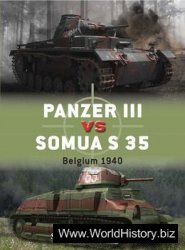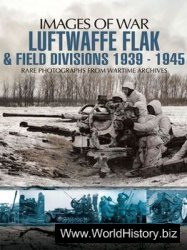At the end of July the Luftwaffe moved another of its “secret weapons” to France: the revolutionary new Messerschmitt Me 262 jet aircraft. Hitler had insisted that these planes be modified to carry bombs and used to disrupt the Allied seaborne invasion. Due to various problems with the novel engines, the aircraft was not ready in time to combat the initial landings but if the Allies landed in the Pas de Calais area, as the Fiihrer still believed they might, the “Blitzbombers” would be in position to strike, each carrying two 5501b (250kg) bombs. The first jet fighter-bomber unit, part of Kampfgeschwader 51 and equipped with nine Me 262s, began operations from Chateaudun near Paris early in August.
In the event the jet planes achieved little. To minimize the risk of losses their pilots had strict orders not to descend below 13,000ft (4,000m) while over enemy territory, and from that altitude accurate bombing was impossible against small battlefield targets such as bridges or vehicles.
Throughout the Battle of Normandy, Allied field commanders received frequent and comprehensive photographic coverage of the enemy positions in front of their forces. Their German counterparts, in contrast, often knew nothing of Allied movements until the attacking units came within sight or sound of their forward positions. Luftwaffe reconnaissance aircraft attempted to fly low altitude photographic sorties by day, and high altitude photographic missions at night using flares. The powerful Allied fighter defenses covering the beachhead and its approaches took a heavy toll of these planes, and those that survived usually did so by breaking off their missions prematurely.
This lack of effective aerial reconnaissance had serious consequences for the defenders. At the end of July American troops broke out of the western side of the lodgment area and, undetected by the German high command, advanced in force down the western side of the Cherbourg Peninsula. On the 31st the advancing units seized the bridges over the Rivers See and Selune at the southern end of the peninsula intact.
Exploiting his unexpected opportunity, Gen. Patton poured his troops across the bridges and into the undefended countryside beyond.
For the Germans, the road between the two bridges now became a “fighter-bombers’ paradise”; mile upon mile of vehicles jammed nose-to-tail and moving slowly along the one narrow road. But by day the German fighter bombers were quite unable to penetrate the thicket of defensive patrols. In a desperate attempt to stop the advance, Dornier Do 217s carrying glider bombs were sent to attack the bridges at night. During these operations one bridge suffered minor damage but it continued in use, and six of the bombers were shot down.
In a move aimed at overcoming the lack of effective aerial reconnaissance over Normandy the Luftwaffe committed another of its “secret weapons”: the Arado Ar 234 jet reconnaissance plane. Two of these aircraft, both prototypes, were dispatched to Juvincourt near Paris, and on the morning of August 2 Lt. Erich Sommer took off for the world’s first jet reconnaissance mission. Flying at 34,000ft (10,000m) at 460 mph (270 km/h), the German pilot made three long photographic runs over Normandy. The skies were clear, but if any Allied fighter attempted to intercept the Arado the latter’s pilot never noticed it. In a flight lasting less than 90 minutes Erich Sommer achieved more than the entire Luftwaffe reconnaissance force in the west had done during the previous eight weeks; he photographed almost the entire Allied lodgment area, from one end to the other. When the films were developed it took a twelve-man team of interpreters more than two days to produce an initial assessment of what the photographs revealed; that is hardly surprising, for by then the Allies had landed more than IV2 million men and 300,000 vehicles. Detailed examination of the prints took several weeks. From then on highflying Arados flew regular photographic missions over the Allied rear areas. Yet the time had almost passed when such intelligence might play a decisive part in the land battle. By now the US armored units were streaming out from the Cotentin Peninsula, and their spearheads were thrusting east, west and south into the hinterland and meeting little opposition.
On August 7 the German Army launched Operation Luttich, a powerful counterattack by five Panzer divisions and elements of a fourth with the intention of driving west to cut off the American advance. That morning a cloak of mist prevented air operations, allowing the German troops to make good progress. By noon the skies had cleared, however.
And for the first time since D-Day Allied fighter-bombers went into action against columns of enemy vehicles moving in the open by day. Nineteen squadrons of rocket-firing Typhoons maintained a shuttle service of attacks against the tank columns. Meanwhile, Spitfires, Mustangs, Thunderbolts, and Lightnings strafed the soft-skinned vehicles and mounted barrier patrols to prevent German fighters from interfering. By the end of the day the German advance had been halted for the loss of more than a hundred tanks. Despite determined attempts to renew the assault, the scale of Allied air power thwarted troop movements during the daylight hours and combined with a stiffening of resistance on the ground, forced the abandonment of Liittich.
Now in an exposed salient and unable to advance, the German Army began to pull back its forces. And again there were lucrative targets for the marauding Allied fighter-bombers. During an armed reconnaissance mission along a road near Carrouges on August 13, for example, a Thunderbolt pilot of the 366th Fighter Group caught sight of a couple of trucks parked under trees. As he pulled round to line himself up for a strafing attack he suddenly noticed what looked like trees growing in the middle of the road. Examination revealed about 30 heavily camouflaged tanker trucks in the area and at least six tanks taking on fuel. The pilot summoned the rest of the Group by radio and the fighter-bombers carried out repeated bombing and strafing runs. When the aircraft departed, having expended their munitions, they left behind a line of blazing vehicles more than a mile (1.6km) long. Elsewhere that day. Thunderbolts of the 36th Fighter Group located a column of several hundred vehicles on the move near Argentan and destroyed a large number of them.
Meanwhile, the American armored thrust plunged deep into France. As other units headed towards Paris and other important cities, the US XV Corps svning north for Argentan. At the same time Canadian and Polish troops advanced on the Falaise area, threatening to envelop the 16 German divisions pulling back from positions to the west of those towns. By August 16 the net was drawing tight and the network of narrow roads leading out of the pocket filled with vehicles of all types moving eastwards. Allied fighter-bombers attacked with bombs, rockets and cannon destroying hundreds of vehicles and creating numerous road blocks, that prevented movement altogether in some areas. The German troops abandoned their vehicles and heavy equipment, and fought their way out of the pocket on foot.
¦ Operation Dragoon
On August 15 Allied troops launched Operation Dragoon, an assault landing on the French Mediterranean coast. The Luftwaffe had about 65 Junkers Ju 88 torpedo bombers and 25 Dornier Do 217s carrying glider bombs based within reach of the landing area, but there were no fighters in the area until a single Gruppe of Messerschmitt Bf 109s was rushed there from Italy. The ships were well protected by land-based and carrier-based fighters, and the German attempts to strike at them had little success. Only one ship, an LST, was sunk by direct air attack, while airdropped mines accounted for a few small craft. Within a few days of the landings Luftwaffe air activity over southern France ceased altogether.
By mid-August the Luftwaffe units in France were on the brink of collapse. Luftflotte 3 was down to its last 75 single-engined fighters and their number was dwindling rapidly. To cover the withdrawal of ground forces a further four Gruppen of fighters were transfered from Germany. One of the units to arrive at this time was Ilnd Gruppe of Jagdgeschwader 6, an Fw 190 unit that had been recently formed with pilots from disbanded twin-engined bomber-destroyer units. The Gruppe flew to Herpy near Reims on August 23, and one of its pilots, Feldwebel Fritz Buchholz, recalled: “Our airstrip at Herpy was nothing more than a piece of flat cow pasture surrounded by trees in which our aircraft could be hidden; nearby was our tented accommodation. The Allied fighter-bombers seemed to be everywhere and our survival depended on the strictest attention to camouflage. As part of this we even had a herd of cows which moved on to the airfield when no flying was in progress; as well as giving the place a rustic look, these performed the valuable task of obliterating the tracks made on the grass by the aircraft. Such attention to detail paid off and there were no attacks on Herpy while I was there.”
The Gruppe flew its first major operation on August 25, when it mounted an offensive patrol with some 40 aircraft over the St. Quentin area. The Focke-Wulfs surprised a dozen Lightnings of the 367th Fighter Group, 9th Air Force in the act of strafing the airfield at Clastres, and shot down six of them. The American pilots’ distress calls summoned the other two squadrons of the Group to the area, and when these joined the fight they quickly turned the tables. Numerically the two forces were almost equal, but the German pilots lacked experience in dogfighting and suffered accordingly. In the resulting mdee the Gruppe lost 16 aircraft destroyed and several more damaged, and accounted for only one more
Lightning. Fritz Buchholz survived the encounter but on the next day he was bounced by a Mustang, shot down and wounded.
The withdrawal of the Luftwaffe from France quickly disintegrated into a rout. The fighter Gruppen sent from Germany to cover the move all suffered heavy losses, and they made no noticeable difference to the predicament of the German Army units which had to face repeated attacks from the air as they headed east. With the exception of its one small reconnaissance unit, the Luftwaffe played no effective role in this phase of the land battle. One German soldier who took part in the Battle of Normandy and the subsequent retreat later commented with some bitterness: “If the aircraft above us were camouflaged, we knew they were British. If they were silver, we knew they were American. And if they weren’t there at all, we knew they were German!” His pungent remark sums up, more effectively than any statistical list of aircraft involved or damage inflicted, the degree of air supremacy achieved by the Allied air forces during the Battle of France.




 World History
World History









